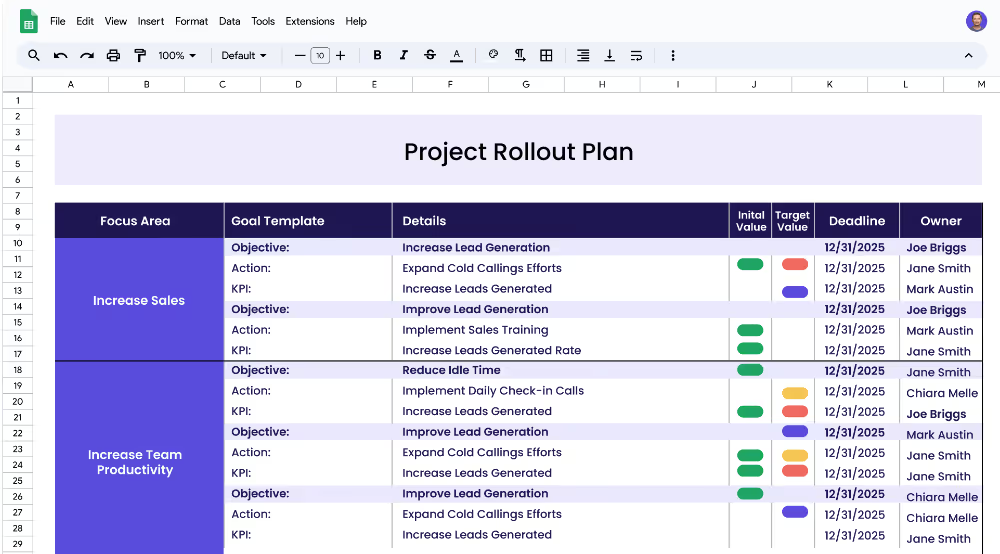A project rollout plan outlines the steps and resources needed to successfully launch a project. It includes the goals and objectives, focus areas, projects and related initiatives, timelines, key performance indicators, and other details for the successful completion of the project. It is often used to ensure that all stakeholders are on the same page and that everyone understands their roles and responsibilities.
Each focus area has its own objectives, projects, and KPIs to ensure that the strategy is comprehensive and effective.
The project rollout plan template is designed for project managers, team leads, and teams in any industry looking to manage the rollout of a new project. This template can help teams create a comprehensive plan to ensure that all stakeholders are aware of the project goals, objectives, and expected timeline. The template can also be used to track progress and measure the success of the project.
A focus area is the main goal or purpose of a project or initiative. Examples of focus areas could include improving productivity and efficiency, increasing quality, or increasing efficiency. It is important to clearly define the focus areas of a project in order to ensure that all stakeholders and team members have a clear understanding of the project goals and objectives.
An objective is a measurable goal that falls under the focus area of a project. Objectives should be specific and measurable so that progress can be tracked and measured. Examples of objectives could include reducing operational inefficiency, optimizing resource utilization, or increasing customer satisfaction.
A key performance indicator (KPI) is a measurable target used to track progress towards an objective. It is important to set measurable targets for each objective in order to ensure that progress is being made and that the project is on track. Examples of KPIs could include decreasing manual task completion times, increasing resource utilization rates, or decreasing customer dissatisfaction incidents.
A project (action) is an initiative taken to achieve a KPI. Projects should be related to the KPI and should be specific and achievable. Examples of projects could include automating manual tasks, streamlining resource allocation, or implementing product testing.
If enhancing your strategic executions tops your agenda, steer away from conventional spreadsheets and utilize the robust capabilities of Cascade Strategy Execution Software. Cascade turns strategy into action faster, delivering real-time updates, centralized collaboration, and automated reporting, which are crucial for dynamic and complex projects. Easily visualize performance with intuitive dashboards and keep your entire team aligned on objectives. Sign-up for free or book a demo and witness a strategic transformation that matches your pace of ambition.


